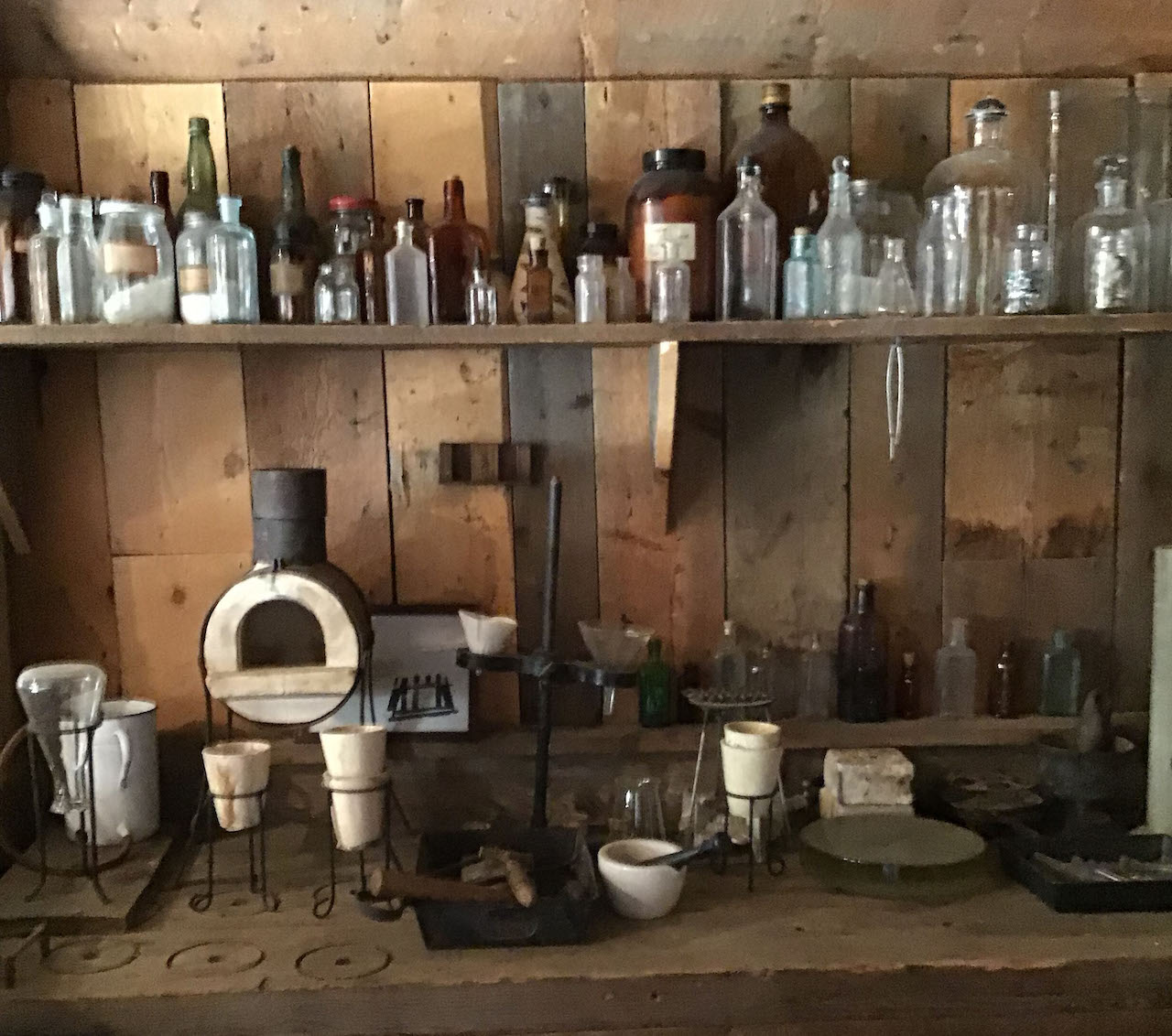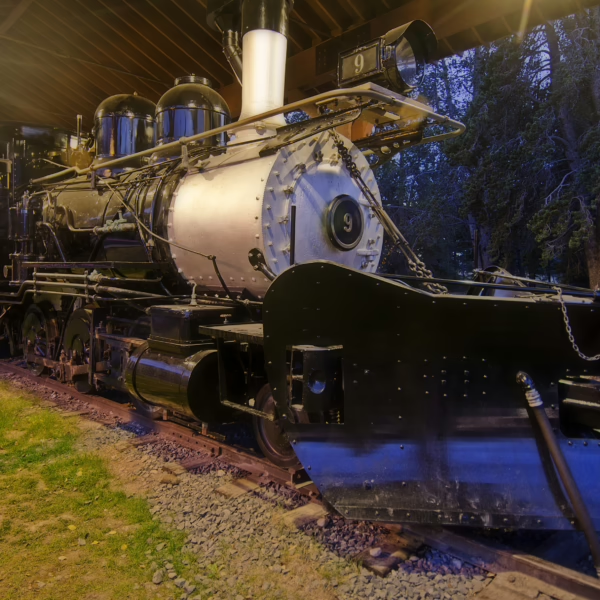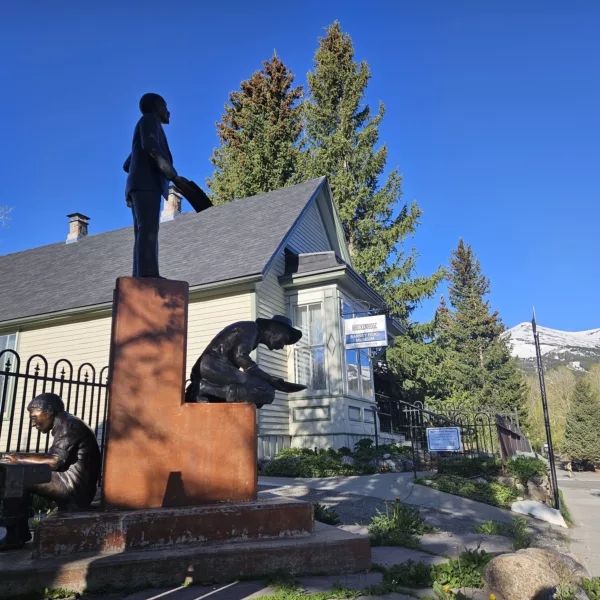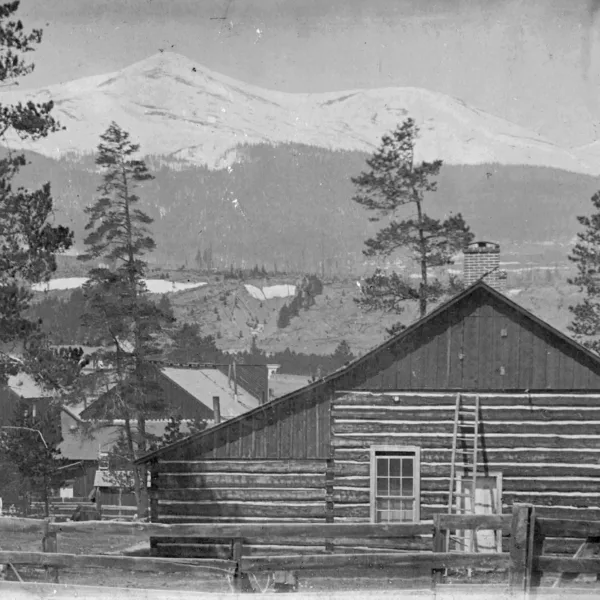El proceso de ensayo
April 08, 2022 | Category: Historia de Breckenridge
 ¿Cómo sabía el prospector que recorría las laderas con su burro, su batea y su pico si había encontrado mineral de valor económico? ¿Cómo sabía una empresa minera si el mineral producido podía reportarle beneficios? Ambos dependían de los análisis químicos. Todos los buscadores sabían hacer un "ensayo de campo" para determinar el valor de su mineral. Las empresas mineras empleaban a un ensayador que trabajaba en una oficina de ensayos bien equipada para llevar a cabo esta tarea.
¿Cómo sabía el prospector que recorría las laderas con su burro, su batea y su pico si había encontrado mineral de valor económico? ¿Cómo sabía una empresa minera si el mineral producido podía reportarle beneficios? Ambos dependían de los análisis químicos. Todos los buscadores sabían hacer un "ensayo de campo" para determinar el valor de su mineral. Las empresas mineras empleaban a un ensayador que trabajaba en una oficina de ensayos bien equipada para llevar a cabo esta tarea.
El ensayo sobre el terreno podía ser peligroso. El prospector lavaba los materiales de su batea hasta encontrar las gravas más finas y (esperaba) escamas de oro. Añadió a la batea mercurio líquido ya impregnado de oro. El mercurio puede absorber hasta el 50% de su peso en oro. Cuando el mercurio se solidificó y se hizo costra, supo que ya no podía absorber más oro. Puso la amalgama de mercurio y oro en una pala y la acercó al fuego, evaporando el mercurio. Por supuesto, tenía que asegurarse de no respirar los gases mortales del mercurio. Algunos buscadores sabían cómo evitar que el mercurio se escapara al aire. Colocaban la amalgama en una patata de asar hueca, unían las mitades con alambre y arrojaban la patata al fuego. La patata absorbía el mercurio que se evaporaba y dejaba el oro. Sólo podemos esperar que el buscador supiera que no debía comerse la patata por muy hambriento que estuviera.
Todos los grandes complejos mineros disponían de una oficina de ensayos bien equipada. Los ensayadores independientes de las ciudades podían prestar servicio a pequeñas explotaciones mineras o a particulares. Cada oficina de ensayo solía constar de tres partes: un despacho con escritorio, armarios y estanterías para libros de consulta, muestras y suministros; un laboratorio con horno, mesas de trabajo, cristalería, crisoles, copelas (kuh pells') y otros equipos como embudos, filtros, atizadores, rascadores y pinzas; y una trastienda con aparatos de trituración y cribado, moldes de latón para fabricar las copelas y mucho polvo de roca. Una zona libre de polvo albergaba delicadas balanzas y básculas.
En las oficinas de las minas y las ciudades trabajaban ensayadores muy respetados y bien formados, con amplios conocimientos de química y procesos químicos. Los ensayadores seguían un proceso muy preciso y complicado para determinar el valor del mineral.
Los ensayadores solían contratar a un joven y fuerte aprendiz para completar el primer paso del proceso: utilizar una serie de equipos pesados para triturar el mineral hasta convertirlo en arena. A continuación, el ensayador dividía el mineral triturado en muestras que pesaban exactamente 29,167 gramos, denominadas "tonelada de ensaye". Como hay 29.167 onzas en una tonelada, la cantidad de oro que quedaba en una tonelada de ensaye servía para juzgar la cantidad de oro que había en una tonelada del mineral del que se había tomado la muestra.
El ensayador mezclaba una muestra en un crisol con reactivos químicos como litargirio (óxido de plomo), bórax (utilizado en lugar de sal), argol en polvo (una sal con la que se fabrica el cremor tártaro), harina de trigo, carbón vegetal, salitre y plata. Los reactivos servían como fundentes, combinándose con otras sustancias químicas para extraerlas de la mezcla; como disolventes, disolviendo ciertos minerales; como agentes reductores, restando oxígeno a algunas sustancias químicas; y como agentes oxidantes, añadiendo oxígeno a otras sustancias químicas. Algunos cumplían dos funciones. El ensayador sabía exactamente qué cantidad de cada reactivo debía añadir.
El ensayador colocaba el crisol en el piso inferior de un horno alimentado por gas o por coque, carbón o carbón vegetal. El monóxido de carbono, ayudado por la harina de trigo, extraía el oxígeno del óxido de plomo. Con la puerta del horno cerrada, las temperaturas alcanzaban más de 2.700 grados F. Al cabo de unos 30 minutos, gotas licuadas de plomo metálico descendían por la mezcla, recogiendo oro y otros metales. El ensayador vertía la "masa fundida" en moldes cónicos y la dejaba enfriar y solidificar. Con el golpe de un martillo, sacaba el cono del molde.
La mayor parte del cono contenía escoria sin valor, pero la punta contenía los minerales valiosos. El ensayador martilleaba la punta en forma de cubo y la colocaba en una copela, hecha de hueso de caballo u oveja mezclado con ceniza de madera y carbonato potásico para darle resistencia, en la cubierta superior u oxidante del horno. Con la puerta del horno cerrada, la temperatura en este paso alcanzaba sólo 1.652 grados F. (no lo suficientemente caliente como para fundir oro o plata). Cuando el cubo adquiría forma de botón, el ensayador abría la puerta para añadir el oxígeno necesario para completar el proceso. El oxígeno vaporizaba el plomo; la copela absorbía el plomo no vaporizado. Cuando todo el plomo se había liberado, el botón se solidificaba y producía un destello de luz. Si el ensayador quería mirar, lo hacía a través de un tablero con una pequeña rendija.
A continuación, el ensayador lava, limpia y pesa el botón, que pasa a denominarse cuenta doré. Un baño de diez minutos en ácido nítrico hirviendo eliminaba la plata que pudiera quedar en la cuenta. Tras un último baño en agua destilada caliente, el ensayador pesaba el oro y anotaba su peso en un certificado. Los costes de extracción exigían de cuatro a cinco onzas de oro por muestra para que el mineral se considerase rentable. El ensayador seguía el mismo procedimiento con todas las muestras menos una, que guardaba por si alguien ponía en duda su honradez.
Aunque los detalles pueden variar, los ensayadores utilizaron este proceso general en todo el Oeste americano.Escrito por Sandra F. Mather, PhD




